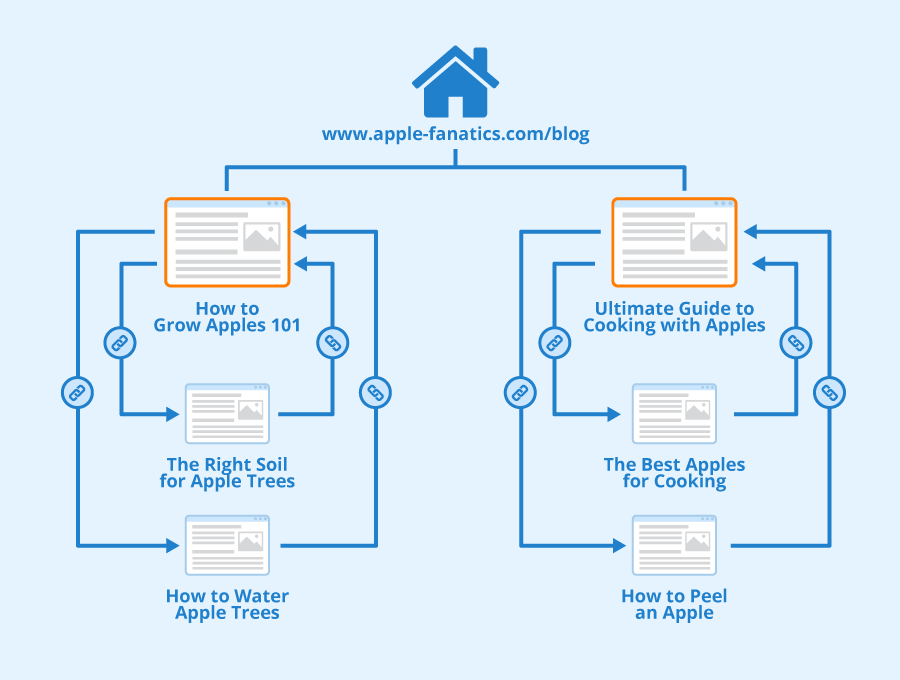
When do you think is the best time to start SEO on your website?
I would say it is about the same time you start your website.
If you are a business small or big, or if you intend to own, manage, monetize or promote content online, one of your goals is to be found on Google. To meet that goal, you need to do SEO for your website.
The daunting task then would be how and where to get started.
I have put together the very first things that need to be taken care of when starting with SEO.
What is SEO?
SEO stands for Search Engine Optimisation, and at first glance, it makes you feel like you are trying to optimize the search engine itself or you are optimizing for the search engine.
Both are incorrect, and that’s probably the root of many of the misconceptions around SEO.
Allow me to explain.
You see, whenever you need specific information, you head to Google and type in your query, and Google promptly comes back with a page full of results.
Usually, you will notice that there are about ten results on the page but have you ever wondered on what basis these results appear the way they do? I am sure you have noticed that there is a hierarchy of results starting from 1 to 10.
And that’s what SEO is all about: trying to get your website to the top of the results.
Search engine optimization is the art and science of persuading search engines like Google to recommend your content to their users as the best solution to their problem.
For a complete understanding of SEO, read my article What the duck is SEO and how does it work?
How do I start SEO for my Website?

SEO is not something you do once and let things go. Before you start SEO for your website, you need an SEO strategy. An SEO strategy is how you approach the task at hand. It is an ongoing process of planning and implementation to attract organic traffic and convert and capitalize on the traffic you receive.
It is your gateway to building brand awareness and customer relationships and also establishing authority in your industry.
Step 1 – Decide your Goals and KPIs
You need to predetermine what you want in the end to work towards it. You can identify the key performance indicators when you know what success for you means.
The work lies in figuring out what your audience is doing once they get on your website. This is identified using the number of users, behavior on landing pages, session time, clicks, impressions, and engagement.
Step 2 – Choosing a Domain name, Host, and CMS
You cannot build a great building on a weak foundation. The right domain name, a relevant web hosting provider, and a reliable CMS are the essential raw materials for your SEO foundation.
Getting your own domain is a prerogative, but choose a domain name in such a way that it helps you establish your brand name and/or keyword strategy. It would help if it is relevant and easy to remember too. Changing the name later can be a pain, so it is ideal to get it right the first time.
You need a relevant web host provider is another crucial factor for SEO because you want good site speed. Neither Google nor visitors are going to be patient. One of the best ways to ensure this is to get a web hosting provider that can help deliver consistent site speeds.
The next element is a reliable CMS and I recommend WordPress. You need something that gives your the flexibility to do everything you need to enhance your SEO.
Step 3 – Design your website Architecture
Any website big or small needs a logical hierarchical structure with the homepage and important topics and the top and then the subcategories down the line. It may not seem like a big deal now when your website is still small and has a few pages, but having a clean structure helps Google crawl your website allowing it to be indexed quickly and also your visitors can skim through the web pages to find what they want.
Make use of breadcrumbs to give a visual representation of the hierarchy and provide clickable links so users (and search engines) know where they are on the website and navigate to other pages easily. Your focus needs to be on making the website as user-friendly as possible.
Step 4 – Establish a Rich Content Strategy

Content is the core of SEO and the core of content for SEO are keywords. Your content strategy needs to begin with keyword research.
In order for everything else to be working out for you, you need to know the subject and keywords you are going to engage within your niche.
You can use existing tools to identify the keywords, their volumes, popularity, and competition and decide what you want to use at your convenience.
When deciding your keywords and what content you are going to create, keep in mind –
- What product or service you have to offer, and
- What your target audience would be looking for.
And then you create content that interlinks both these pointers. Use the keywords to create blog articles and content pillars.
Pillar content is also called as 10x content and it is long-form writing on specific topics that keep users engaged to your web pages longer and you would be offering answers to everything they are looking for around that topic.
To support this long-form article, you need to create topic clusters that will form individual blog articles that link to the pillar article. The image below gives a pictographic representation.
Keep creating more such articles that you will end up with a mini-Wikipedia in your niche.
Step 5 – Get the tools
Getting the right tools for your SEO strategy is equally important. So here is a Checklist for you –
a) RankMath – It is the ultimate combo pack of various tools which you need for your SEO game.
b) Ahrefs – You need this for keyword research, generating content ideas, performing audits of sites, analyzing sites for backlinks, and tracking your rankings.
c) Google Page Speed Insights – Google’s own to keep your page speed in check with reports on the site performance on both desktop and mobile and provides suggestions for improvement.
d) Google Analytics – It is Google’s web analytics service to track traffics, and advertising ROI.
e) Google Search Console – It is a web service offered by Google to monitor the indexing status of your website, troubleshoot, and optimize its visibility.
f) Google My Business – It is mandatory for local SEO to create your business profile on Google search and maps.
g) Grammarly – The Grammarly app is useful when you are creating content, to keep your grammar in check and avoid going astray with plagiarism.
Conclusion

Well begun is half done, and this was just the beginning. It is important that you get the basics right. All this was mere preparation and there is a lot of work to do with on-page SEO, off-page SEO, and technical SEO. You can find it all in detail in my article on SEO. SEO is a complex process and it is not a one-time deal where you apply it and let it work itself.
Search engines keep evolving. It is not what it was ten years ago and we cannot know for sure what it is going to be like ten years later. We need to evolve our SEO strategies along with the workings of the search engines for the best possible outcomes.
Are you ready to get started?
Let me know in the comments!


